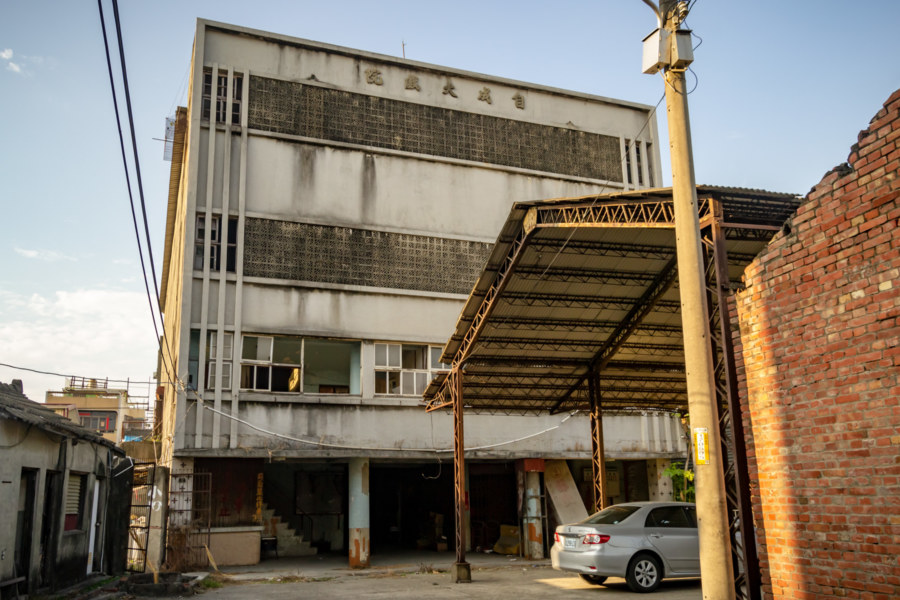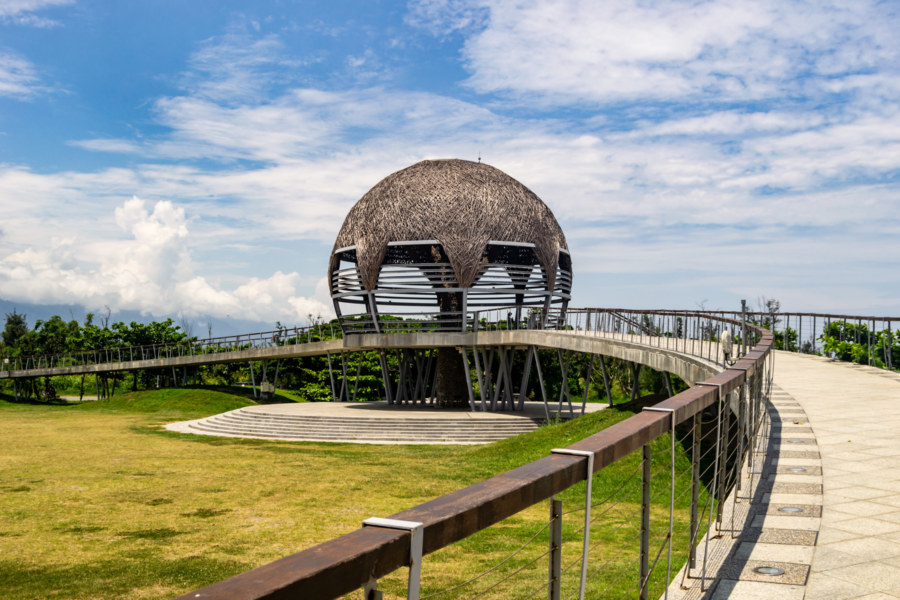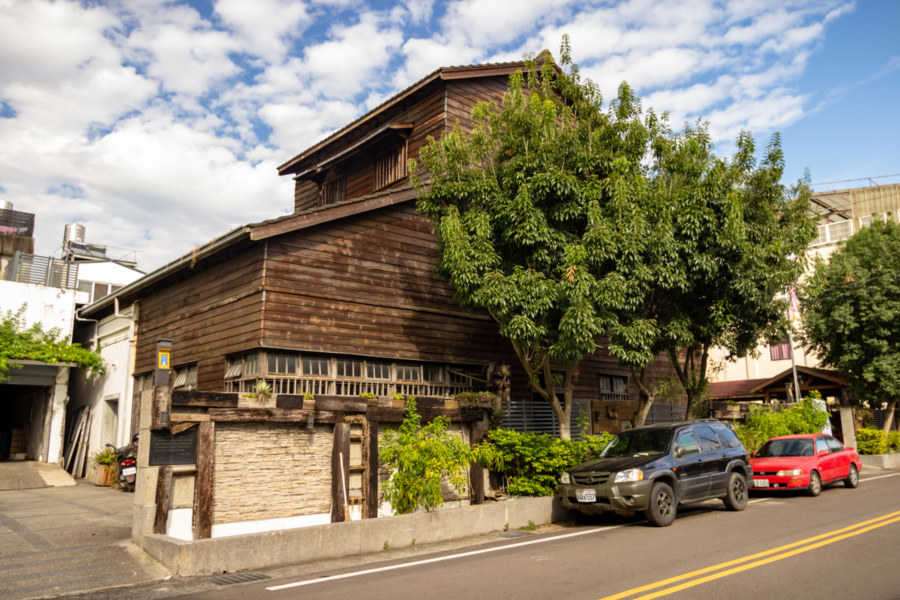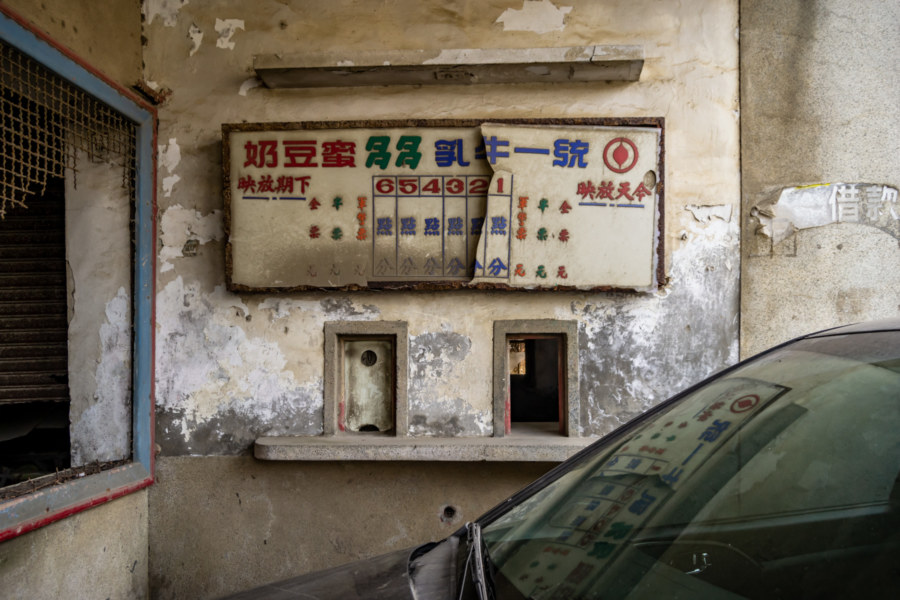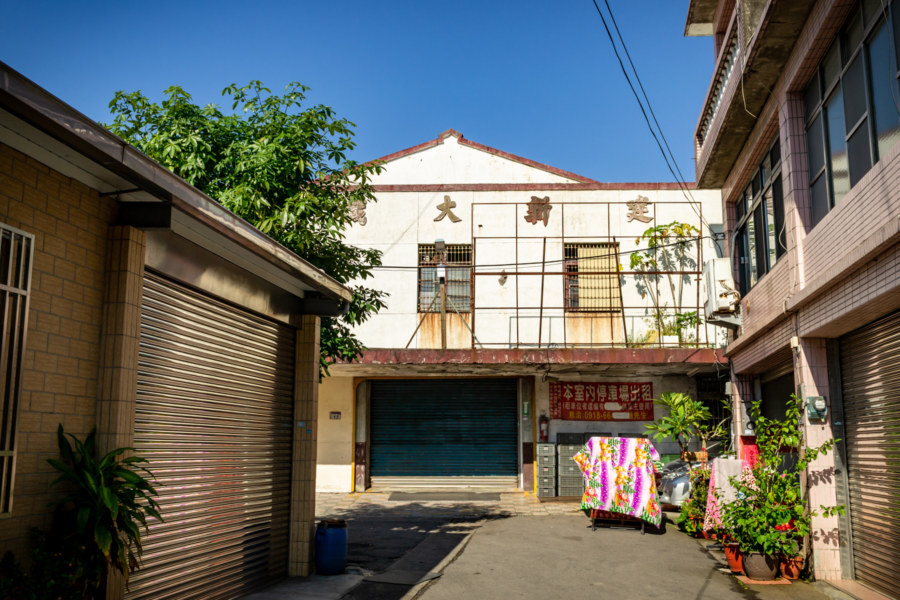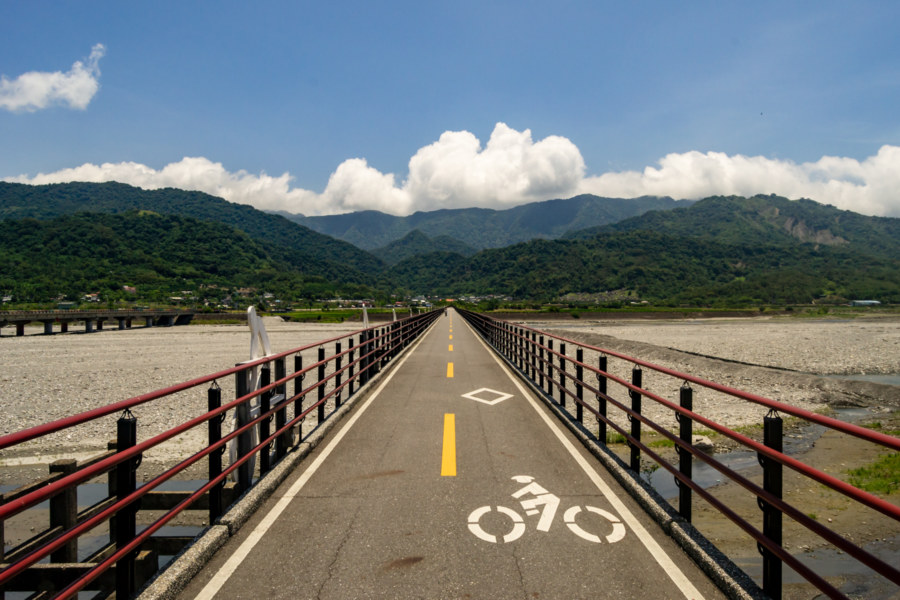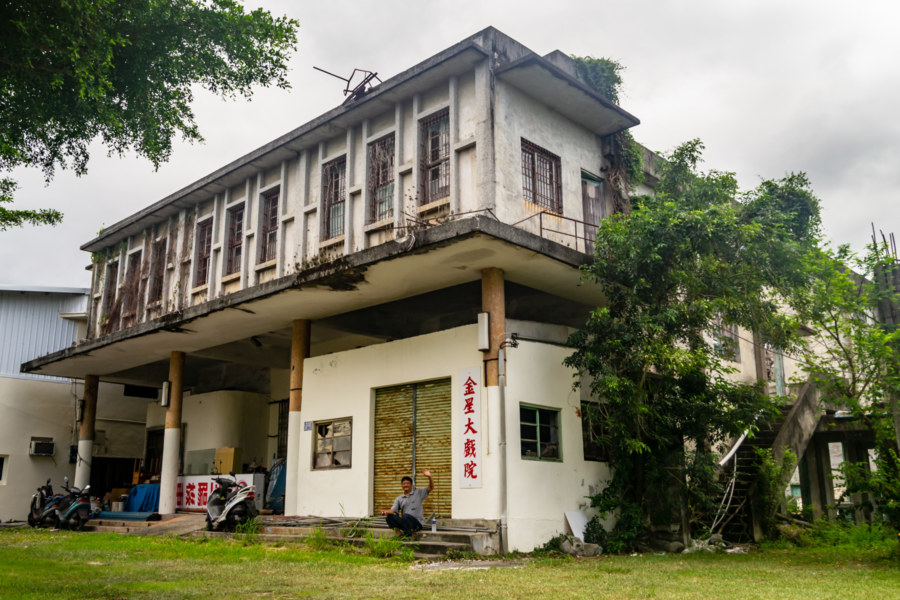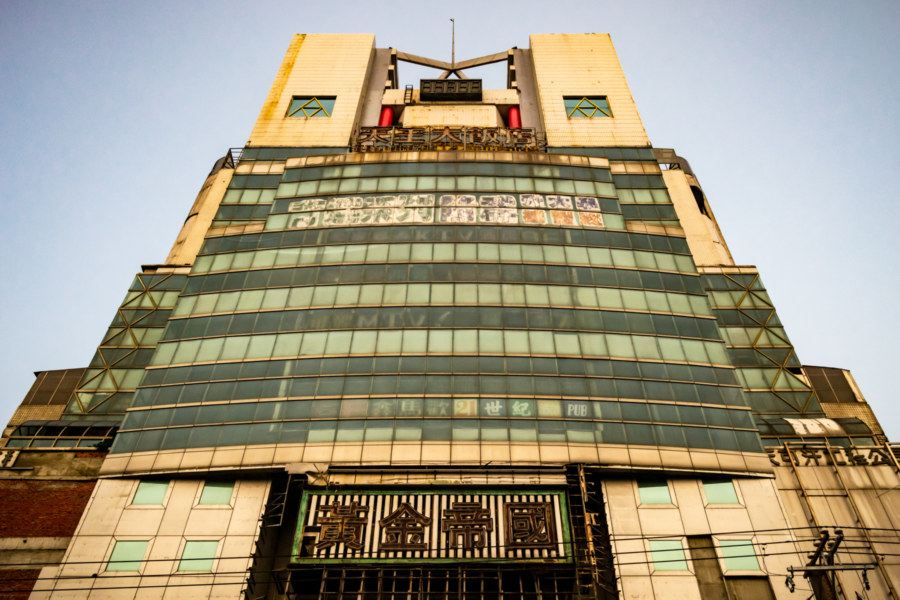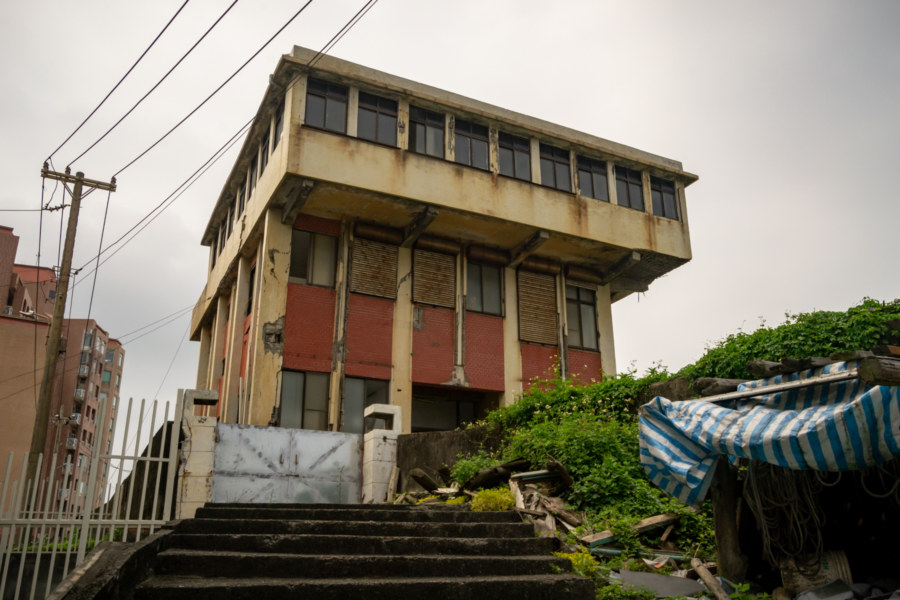Zìchéng Theater (自成大戲院) is a derelict cinema located in Baozhong, a rural township on the coastal plains of Yunlin, Taiwan. After opening in 1966 this theater drew enormous crowds from the surrounding districts, particularly in its early years of operation, when it was customary for movie stars to appear on stage to promote new films. Business began to decline with the closure of the nearby sugar factory and the widespread adoption of home television in the late 1970s, ultimately leading to the final screening sometime around 1985. Since then the theater has remained idle, slowly decaying with the passage of years, its fading fortunes mirroring those of the surrounding settlement.
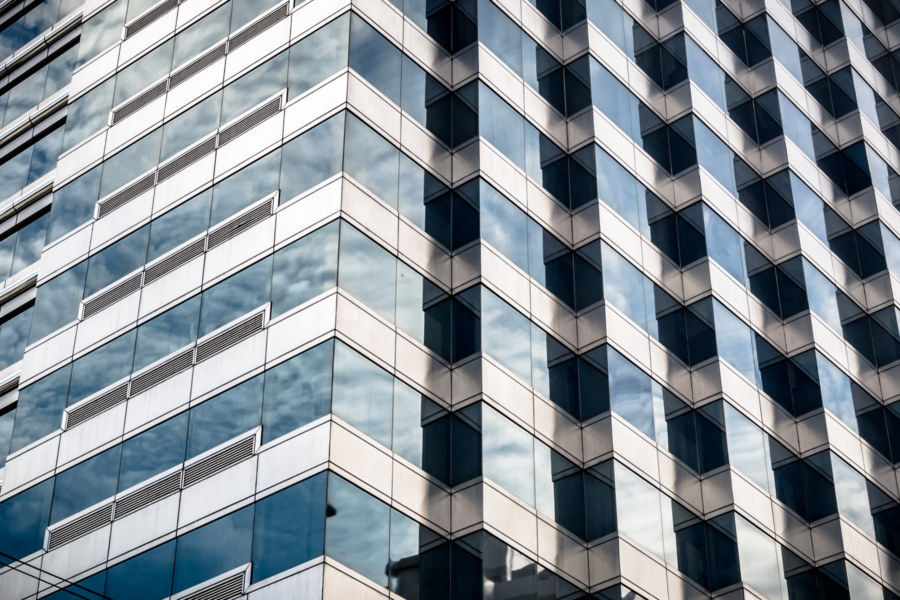
Structures fit for habitation and use. See also: urbanism, commercial, industrial, residential.
Subterms
Adjacent Terms
Huadong Valley Ride 2018: Taitung City
This entry documents my final day of riding on a bicycle trip down the Huadong Valley in 2018. I began with a short yet eventful spin around Taitung City, the administrative capital of Taitung, and headed southwest across the alluvial plains before curving back to catch a train bound for Taipei in the afternoon. I already introduced the history, geography, and culture of Taitung City in this post from a previous visit in 2015, so I’ll focus on specific sites I visited on this particular trip.
Shigang Rice Barn 石岡穀倉
Shigang Rice Barn 石岡穀倉, formally known as the Shigang Farmers’ Association Rice Milling Barn 石岡農會碾米穀倉, is one of the best preserved Japanese colonial era rice barns in Taiwan. Constructed with locally-sourced timber in 1941, it was designed to be earthquake-resistant, benefitting from hard lessons learned from the 1923 Great Kantō Earthquake and the 1935 Hsinchu-Taichung Earthquake. It was in use for many decades before modernization of rice milling made it obsolete, presumably sometime in the 1980s or 1990s, leaving the building derelict and threatened with demolition.
Mailiao Jincheng Theater 麥寮金城戲院
Jīnchéng Theater 金城戲院 is located in Mailiao, a rural township in northwestern Yunlin, Taiwan. This theater is something of a cypher; it was reputedly built in 1965, but may have only opened in 1968, and business records record only one transaction in 1975. It probably closed in the late 1980s or very early 1990s, a casualty of changing consumer habits and population outflow to larger urban centers. Beyond that, not much is known about this hulking monster of a theater, which may have accommodated something like 800 patrons at its peak.
Daxi Jianxin Theater 大溪建新大戲院
Jiànxīn Theater (建新大戲院) is located in Yuánshùlín (員樹林), a suburban area on the western outskirts of Daxi in Taoyuan, Taiwan. Business records indicate an inception date of 1977, but not much is known about this theater apart from that. The last recorded transaction in 2000 sets an upper bound on when it was operating, but likely went out of business in the early 1990s, when most of the rest of Taiwan’s cinema industry collapsed. It now enjoys a second life as a parking garage for the nearby factories and residences.
Huadong Valley Ride 2018: Yuli to Guanshan
Day four of riding through the Huadong Valley of eastern Taiwan in 2018 began in Yuli, the midpoint of this bicycle trip from Hualien City to Taitung City. From the weather report I knew I’d have another challenging ride ahead—yet again the mercury was due to exceed 35 degrees. Luckily I was in no great rush, as I had allocated an entire week for a trip that experienced riders could easily manage in two days. I made good use of that extra time, making numerous stops and detours to document some of the many historic and cultural sites along the way, many of them quite obscure. I ended the day in Guanshan, slightly more than 40 kilometers down the valley.
Jinxing Theater 金星大戲院
Jīnxīng Theater 金星大戲院 is located in the small town of Zhīběn 知本 on the southern outskirts of Taitung City, Taitung, in southeastern Taiwan. Zhiben is home to the Katipul group 卡地布部落 of the Puyuma people 卑南族, one of Taiwan’s recognized Indigenous groups, but this theater was constructed in 1967 to cater to the many KMT veterans who settled here after the completion of the Central Cross-Island Highway 中部橫貫公路. Named after Venus (literally “Golden Star” in Chinese), it went out of business shortly after it was sold to a lumber company in 1980 and has been abandoned ever since.
Postcards From Yuanlin 員林明信片
Yuanlin is a modest settlement of approximately 125,000 residents located on the Changhua Plain (彰化平原) in eastern Changhua, Taiwan. It was formerly the most populous urban township in the nation, but Yuanlin was upgraded to a county-controlled city in 2015, second only to the administrative capital, Changhua City. Considerable work has been done in recent years to improve the urban environment of Yuanlin, and it feels like one of the few places between Taichung and Tainan that isn’t falling into disrepair and emptying out. That being said, urban decay remains widespread in Yuanlin, and there are many interesting ruins worth exploring before they disappear. For students of city planning and development this compact city also has quite a lot to offer—and in this post I aim to introduce some of its more intriguing features, mainly drawing upon photographs from 2013 to 2015, when I was spending significant amounts of time in the area.
Yeliu Signal Station 野柳信號臺
Green Bay is a forlorn stretch of sandy coastline in Wanli, a rural district of roughly 22,000 residents situated on the rugged northeastern coast of Taiwan. It is widely known for its many derelict resorts, most famously the so-called Wanli UFO Village (萬里飛碟屋), which is what initially drew me here in 2013. I returned a year later and noticed a dilapidated structure further along the beach, an unsightly institutional building similar in appearance to a Taiwanese police station of the 1980s. A closer inspection revealed an interior cluttered with intriguing artifacts and decaying documents—enough to conclusively identify this neglected ruin. This was formally known as the Yeliu Signal Station (野柳信號臺), an outpost responsible for monitoring maritime traffic in the shipping lanes and designated anchorages just west of the Port of Keelung.
Huadong Valley Ride 2018: Fenglin to Yuli
Day three of cycling down the Huādōng Valley 花東縱谷 began with a hearty Taiwanese breakfast not far from the train station in Fenglin, Hualien. I was still recovering from a brush with heatstroke (a story documented in the previous entry in this series) so a traditional breakfast of dànbǐng 蛋餅 (pan-fried egg rolls) and sweet black tea really hit the spot. A glance at the weather forecast indicated another full day of sunny skies and 35°C temperatures on the road—and even fewer opportunities for air-conditioned rest stops. I wasn’t too worried though; my loosely-planned itinerary of former Shinto shrines, industrial ruins, and other historic sites didn’t look all that challenging. Ultimately I ended up putting 60 kilometers of valley behind me, ending the day in Yuli.
